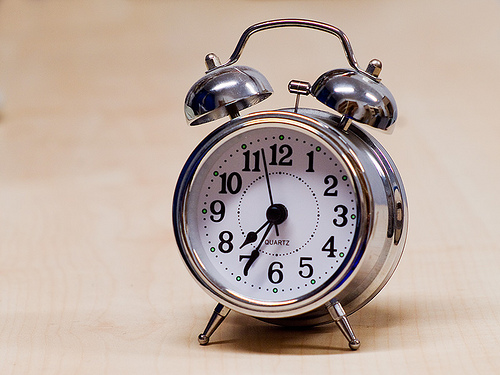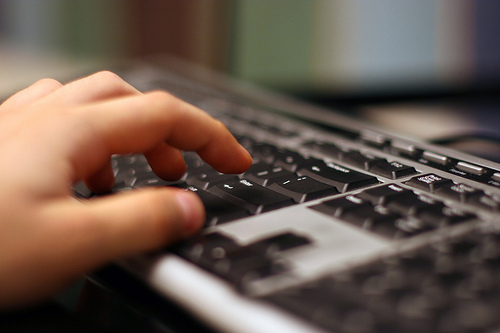15 Email Hacks to Increase Productivity
Given the competing demands of owning a business, managing a team of employees and trying to keep my personal life together, I spend an average of about 4-5 hours a day answering email messages. I answer emails while I’m in and out of calls, sitting in meetings or working from coffee shops, using everything from my iPhone to my Android phone, my iPad and my computer (though most of my email activities are carried out on mobile devices these days).
Since email management plays such a big role in my life, it’s important to me that I’m as productive as possible when it comes to responding to messages. The following hacks have all helped me to keep up with my messages and maintain “Inbox Zero” for the last eight months – I hope you find them helpful as well!
1. Respond to simple messages first thing in the morning.
Plenty of productivity gurus will tell you not to check your email messages first thing in the morning, but let’s be realistic – it’s almost impossible to resist clicking into your inbox when you first wake up.
So, instead of saying that you shouldn’t even peek at your messages before cranking out a few hours of productive work, I recommend taking a “middle of the road” approach. Check your messages first thing in the morning, but only respond to items that can be handled in one minute or less. Delete anything that you don’t need to follow up with, answer simple questions and then flag any messages that will require more time to respond to for your attention later in the day – after you’re able to get some work done.
2. Centralize your email activities from within a single account.
These days, having multiple email accounts is the norm – but checking all of these inboxes individually represents a huge productivity loss. A much better approach is to centralize your messages in a single account (though you’ll need to be sure your chosen email hub gives you the option of sending outbound messages from your connected alias accounts).
Personally, I’m partial to using Gmail as a central hub, as it gives you the ability to connect multiple email addresses and send messages using all of these different accounts as your “From” address. In addition, Gmail makes tons of different extensions and add-ons available (some of which I’ll mention below) to help you manage your inbox as efficiently as possible.
3. Set up strong filters.
No matter what program you decide to use as your email hub, put some serious effort into the filters you create to manage incoming messages. When it comes to productivity, there’s really no substitute to having inbound emails automatically filtered into a folder system that enables you to easily scan and follow up with your highest priority messages.
For a few ideas on possible filters to set up, consider the following:
- Send messages from your supervisor or direct reports to a separate folder
- Redirect emails from top priority clients to a separate area that’s immediately visible in your inbox
- Automatically place newsletters or autoresponder courses into a sub-folder for later browsing
You’ll want to experiment with different filter options in order to see what works best for you. Remember, the last thing you want is for a priority message to be hidden from your sight, so take care to check all folders after adding a new filter to your account!

4. Separate individual messages from group emails.
One particular type of filter or label you’ll want to set up is a method that separates messages that are sent only to you from those that are addressed to an entire group. This is especially important if you work within a large organization that sends frequent mass emails, as you’ll likely find it useful to prioritize personal communications over company-wide messages.
Depending on the email system you use, you can do this using either a filter or label. For example, in the case of Gmail, you could simply add a color label or “<” identifier to individual messages, instead of redirecting these emails to a separate folder.
5. Use the Email Game to get to Inbox Zero
Maintaining an “Inbox Zero” (that is, a totally empty inbox) is crucial for me to ensure that important messages don’t get buried amongst newsletters and spam emails. However, I also know that, for plenty of people, the idea of wading through the thousands of messages in their inboxes in order to reach this point may seem overwhelming.
If you’re serious about getting to Inbox Zero, consider experimenting with Baydin’sEmail Game program. Although it currently only works with Gmail accounts, you’ll find that it’s a fun, free way to process hundreds of inbox messages in a single go.
6. Dedicate certain times of the day to answering emails.
This tip comes from Tim Ferriss’s popular book, “The Four Hour Work Week.” Basically, if you check your email every time you think about it, you become a slave to your inbox, which prevents you from attaining the focus needed to get things done in other areas of your professional life.
The solution? Set certain times throughout the day to check your messages – say,8:00 am, noon and 4:00pm. Train your colleagues to understand that you’re only available via email during those hours, and use the rest of your newly-found free time to make progress on the tangible items on your “To Do” list.
7. Split email messages by type.
In addition to only answering email messages at certain times of the day, I’m also big on splitting them up by different types.
For example, when I sit down to respond to emails, I might answer all of my meeting scheduling questions at once, before moving on to answering short questions, providing internal feedback, fielding questions from clients or sending personal messages. Doing so helps me to stay organized (so that I’m not scheduling meetings on top of one another, for instance) and reduces the mental strain needed to shift back and forth between different message types.
8. Make use of email template services.
If you find yourself typing the same messages over and over, you need an email template service, which will allow you to store snippets of text and add them to outgoing emails automatically. Whether you use this type of tool to automatically follow up with clients, respond to link requests or email new prospects, the potential time savings can be immense!
For a few template service options, take a look at Gmail’s Canned Responses,AutoHotKey, Texter or Yesware.
9. Experiment with keyboard shortcuts.
Nearly all email programs make use of a set of keyboard shortcuts that enable you to execute specific commands quickly and effectively. Though these features can involve a bit of a learning curve when it comes to reading and implementing shortcuts, doing so can save you a tremendous amount of time over traditional email operations.
10. Try Sanebox to weed out unimportant messages.
So far, at least a few of the hacks I’ve covered involve making sure you’re seeing and responding to your most important messages first. And while you can accomplish this using filters, labels or other tools, an even faster way to clean up your inbox is to use a program called Sanebox.
For a small fee, Sanebox will automatically filter “unimportant” messages out of your Gmail inbox, relegating all other emails to a “SaneLater” folder that you can peruse at your leisure. The program actually trains itself based on your activities, meaning that a small investment of time can result in an inbox that’s custom-tailored to your message handling preferences.
11. Use Unroll.me to easily manage email subscriptions.
Another fun tool to take a look at when trying to get a grip on your email accounts is Unroll.me, which is particularly useful for unsubscribing from multiple lists at the same time.
Over time, we all get signed up for more subscription lists than we’ve bargained for – and left un-checked, these automated messages can take over your inbox. Unroll.me is a great, free option for visualizing the number of subscription lists you’ve been added to, as well as automatically unsubscribing from the messages you no longer wish to receive.
12. Install social CRM tools inside your email accounts.
To get even more out of your email account, make it do more than just serve up messages! One of my favorite new email tools is Rapportive, which automatically pulls social media activity from your email contacts and displays it in a sidebar next to your messages. It’s an especially useful option when email mentors and other business network members, as it enables you to quickly reference your contact’s recent online activity – providing a great jumping off point for starting new conversations.
13. Address personal messages outside of working hours.
Although your results may vary, I’ve found it most effective to respond to personal messages outside of my working hours. For some reason, responding to personal messages shifts me out of a productive mindset and makes me more likely to engage in time-wasting internet activities, rather than getting back down to business.
If you find yourself mysteriously winding up on Facebook, Twitter or any other personal website after responding to private messages, consider saving these activities for a time when you’ve finished your professional work for the day!
14. Re-read your messages before you send them.
Sometimes, I’ll get typing so quickly when responding to email messages that my mind can’t keep up with what I’m writing. As a result, spelling and grammatical errors can sneak into my messages and get sent out to customers and contacts – unless I’m careful to re-read them before pressing the “Send” button.
While it might seem like this hack actually increases the amount of time you spend on email, it pays off in terms of maintaining your professional reputation and ensuring the clarity of your messages. Really, you aren’t saving any time if your recipient has to email you back and ask you what you meant with your original message!
15. Take action – every time.
Finally, it should go without saying, but one of the most important things you can do to manage your inbox more effectively is to take action on every piece of mail that you open – every time.
Instead of reading through a message and deciding to act on it later, take the time to either reply right away (if the time needed to compose a response is short), delete the message (if it’s unimportant) or archive it to a folder that will be emptied later (if you’ll need more time to draft a response). Doing so will go a long way towards reducing the number of messages that sit idly by, clogging up your inbox unnecessarily.
So that, in a nutshell, is how I manage my email inboxes. This system has worked for me for over ten years, but I’m always open to new ideas. If you have any other email productivity hacks to share, leave me a message in the comments section below!
Related articles






